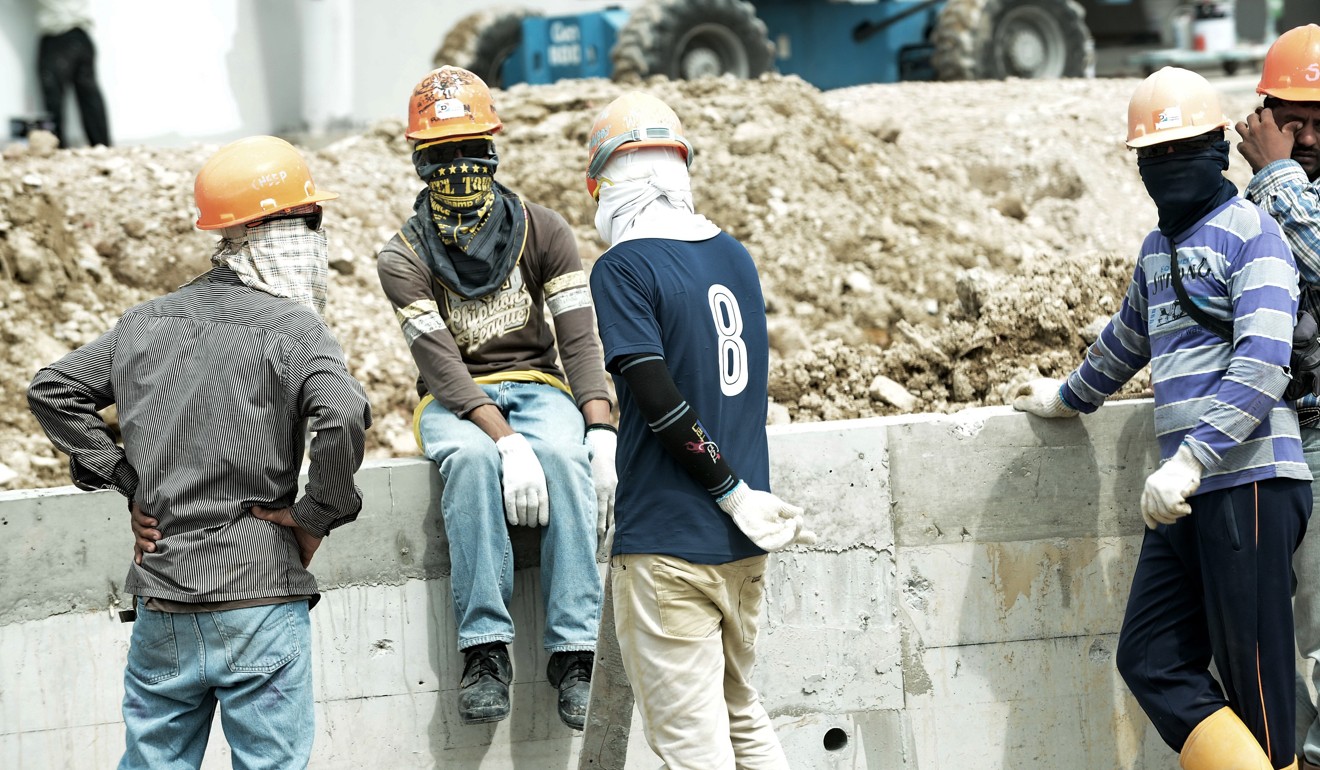What do Asians really think of migrant workers? You might be shocked
- Thirty per cent of Singaporeans believe migrant workers are a drain on the economy, finds study by the ILO and UN
- And more than eight in 10 Malaysians believe migration and crime are linked

On December 18, 2000, the international community adopted the International Convention on the Protection of the Rights of All Migrant Workers and Members of Their Families. Thus, we mark what is now known as International Migrants Day.
In the 19 years since the convention, we have made it easier and easier to move around our connected world. We have proven that migrant workers make huge financial contributions to the societies they are from and the societies they work in. Women migrant workers especially catalyse large changes at home through the sending of their remittances.
With increasing numbers of migrant workers, the expression and reiteration of their fundamental rights have never been more crucial.
In Southeast Asia and the Pacific, 11.6 million people are migrant workers – 5.2 million of whom are women. Many countries in the region rely on migrant workers for the functioning of their economies. These migrants shoulder large shares of work and fill local labour shortages in key sectors like manufacturing, domestic and care work, services, and agriculture. With ageing populations and declining birth rates in several Asean countries, growing shortages will continue. Migrant workers are willing to fill these gaps.
But what do people think of migrant workers?
The report “Public Attitudes towards Migrant Workers in Japan, Malaysia, Singapore, and Thailand” by the International Labour Organisation and UN Women attempts to answer this question.
The study surveyed 4,099 members of the general population aged 18 to 65 year in four migration destination countries: Japan, Malaysia, Singapore, and Thailand. The result is concerning. Despite migrant workers’ critical role, the study shows a worrying trend in public opinion.
The research reveals low levels of support for Asean migrant workers in all four destinations. For instance, 30 per cent and 32 per cent of respondents in Singapore and Japan respectively believe that ‘migrant workers are a drain on the economy’ while 40 per cent in Thailand and 47 per cent in Malaysia agreed.
The study also reveals that 51 per cent of respondents in Japan, 52 per cent in Singapore, 77 per cent in Thailand, and 83 per cent in Malaysia felt that migration and crime are linked. Neither of these beliefs is true, but demonstrate how facts can be eroded by fear, xenophobia, and racism.
These attitudes also suggest a fundamental view that migrant workers should be treated differently, and that discrimination is not a problem. When asked whether women migrant workers should have equal wages with women nationals doing the same job, only 33 per cent in Malaysia and 38 per cent in Singapore agreed, while nearly two thirds of people in Japan and Thailand agreed.
These kinds of erroneous assumptions and ideas not only devalue the identities and contributions of migrant workers, but also worsen their existing poor working and living conditions. We know there is a link between low levels of public support for migrant workers, discrimination, and unfavourable migration polices.

We also know that women have different – and sometimes worse – experiences of migration. Discrimination based on gender puts women migrant workers further at risk of violence, harassment, and exploitation.
Women make up nearly half of migrant workers in Southeast Asia and the Pacific. Yet, gender inequalities and sexism are perpetuated through migration for work, manifesting in poor attitudes, perceptions, and behaviours towards women migrant workers. These factors make it even harder for them to access regular migration channels and decent jobs, with, for instance, equal pay to men and the right to maternity leave. Legal protections from violence and harassment are often limited, as are coordinated quality services in response to situations of abuse.
When it comes to polling on issues affecting women migrant workers specifically, however, members of the public are relatively more supportive. Majorities in each country polled thought women migrant workers should have rights to maternity leave and better labour conditions for domestic workers. When asked if they support stronger law enforcement to reduce violence against migrant women, 67 per cent of the public in Japan responded positively, as did 77 per cent in Singapore, 82 per cent in Malaysia, and 83 per cent in Thailand. Despite the support from the public, women migrant workers still face challenges when seeking help. Fear of being deported, reluctance to report abuse to legal authorities, language and cultural barriers are among the multiple obstacles women migrant workers who experience violence may face. We need to fill the gap between the public opinion and practices that women migrant workers regularly experience.

From this research, we have increased our understanding of what host societies think. The other side of this equation is to hear more of what migrant workers think. One prospective woman migrant worker interviewed in Vietnam said, “I wish to go abroad for work once […] I want to go one time to see, to change my life a little.” Our institutions, structures, and democracies must be partners in the change that she and other migrant workers desire, and their voices must be heard by governments, employers, and trade unions within the world of work.
Indeed, we need to see more migrant workers and hear their experiences. We need to understand their goals and motivations, and their struggles and challenges. Perhaps the most important finding of the study relates to how much we interact with migrants. The greatest predictor of whether a person is going to have a positive attitude towards migrants is how much that person interacts with migrant workers.
It is critical therefore to encourage more interaction of communities with migrant workers – to build trust, understanding, and familiarity with each other. The more interaction we have with migrants, the less xenophobia and discrimination they face. This has to be met with changes to laws and policy to ensure there are no exclusions or “special rules” that apply to migrant workers; that they receive fair and equal treatment; that freedoms from violence and harassment are upheld; and that city planning, social dialogue, and workplace inclusion encourage social interaction.
Next year, we will observe 20 years since the international community committed to realising the rights of migrant workers. The ILO and UN Women hope it will also mark a shift in our collective efforts to ensure attitudes to women and men migrant workers are positively reflecting the enormous sacrifices and contributions they make in our world.
Deepa Bharathi is Chief Technical Adviser for the Safe and Fair Programme, International Labour Organisation Regional Office for Asia and the Pacific; Anna Engblom is Chief Technical Adviser for TRIANGLE in Asean Programme, International Labour Organisation International Labour Organisation Regional Office for Asia and the Pacific; Melissa Alvarado is programme manager of Ending Violence against Women, UN Women Regional Office for Asia and the Pacific